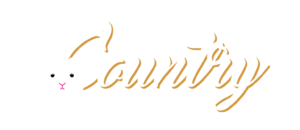Understanding EA Rabbit Basic Genetics
PART ONE
This is how I begin to explain the basic colors and genetics to new bunny breeders. This page is going to describe:
BASE SELF VARIETIES
REGULAR AGOUTI'S
CHINCHILLA AGOUTI'S
FAWN/RUFUS

We will begin by explaining that there are two base colors and their dilutes. Black “B” and Chocolate “b” in the English Angora rabbit breed. The dilute color for black is blue and the dilute color for chocolate is lilac. Here are some great photos to show comparisson between the four colors on some junior EA bunnies.
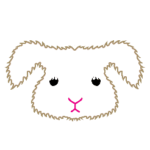
All English Angoras are born naked unless they are overdue. Color grows in and pigment stretches out as the wool grows.
Want to see more? Subscribe to our YouTube channel. We periodically add bunny videos and other things happenings on the farm!
This video is from our YouTube channel, God Given Country Liven. We are trying to start posting more helpful color videos. This one is showing all four base rabbit colors from newborn kits.
All agoutis are born one specific base color and then they change as the wool begins to grow out. They change quickly so it is good to always remember the birth color!
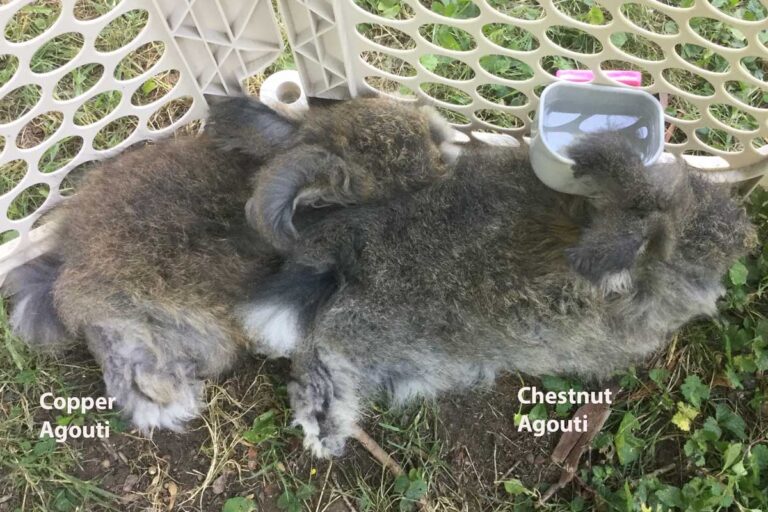
Photo above is a copper agouti on the left and chestnut agouti on the right. Both were born black with agouti markings from the same litter. The rufus +++ was stronger in the EA on the left which made him a copper agouti.
Below you will see a series of newborn kits to compare the markings. A self black kit will be solid all over. A black agouti kit will be black at this age with agouti markings that are difficult to tell for sure until the wool starts growing in. It is best to watch for colors closer to a week old but if you are trying to learn colors and genetics, it is best to take photos like these from the beginning so you have something to look back on. If you forget what colors were when they were born, you may not be able to tell what color they are as the wool changes. Agoutis are the most difficult to tell colors once they are full grown and especially if their wool has been sheared off. The wool keeps growing in the same order as it should as if it were never cut and it could be cut off in a white or rufus growth stage. You will have a really hard time telling the color then!
It is always best to check facial color as it does not change but remember, there are modifiers that can change colors to appear different than normal. Eye color is a great thing to look at if you are still trying to figure out a coat color. All black, copper, and chestnut Angora should have dark brown eyes (no dilute). This also does not apply if there is chinchilla or sable involved in the genetics of an individual rabbit.
Regular Agoutis.... these are the ones that have rufus in them. This is the yellow -tan - red pigment you will see as the coat grows.
Regular agouti are your Copper, Chestnut, Opal, Chocolate Agouti, and Lynx. These will all turn colors as they grow. One thing is for certain though, they are all going to be born with a white/cream belly, complete underside from tip of tail to mouth, rings around their nose and eyes and inner ears are white/cream as well. This is a dead giveaway on agouti when born. As self colored bunnies are solid in all of these areas. We will call these “agouti markings”. These areas remain white or creamy white throughout their lifetime. Any area of that bunny that has pigment to it, will change as the coat grows and you will see rings of color change every time the coat starts over on growth.

Black bunnies born with agouti markings will turn either Copper or Chestnut. Copper is a high rufus black based agouti. Chestnut is the regular, more common black based agouti. There is less rufus in a chestnut agouti.
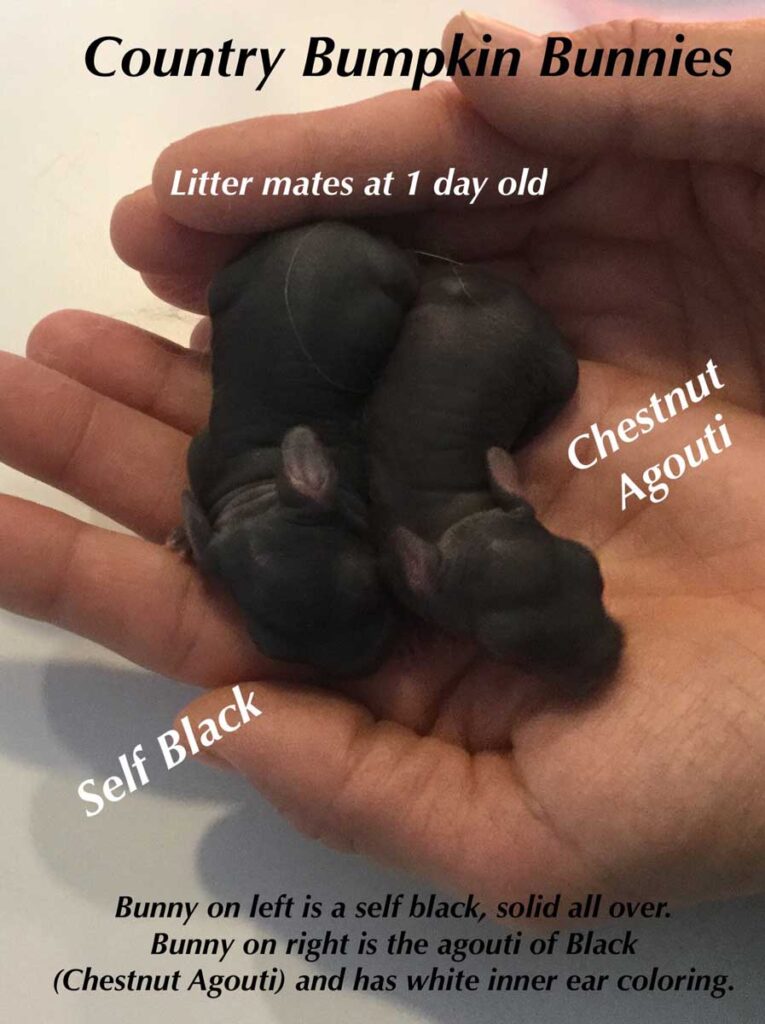
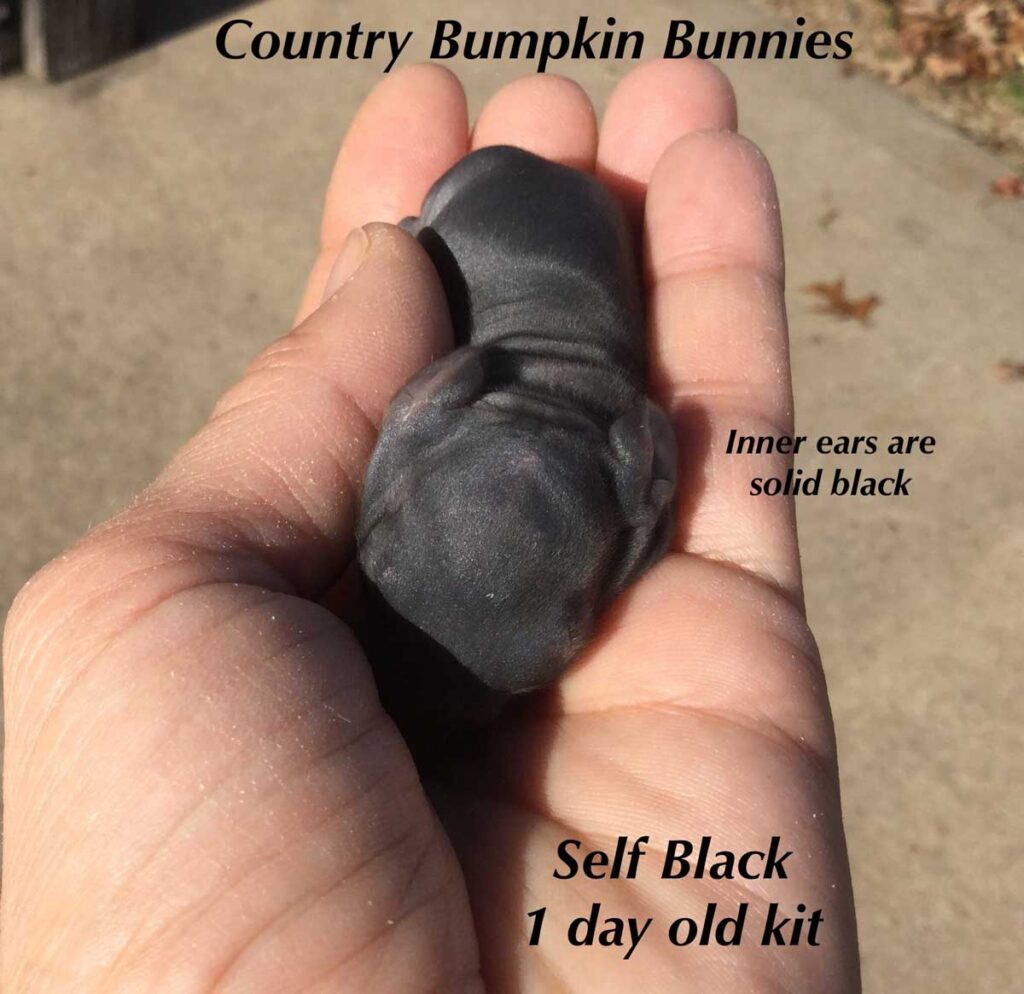
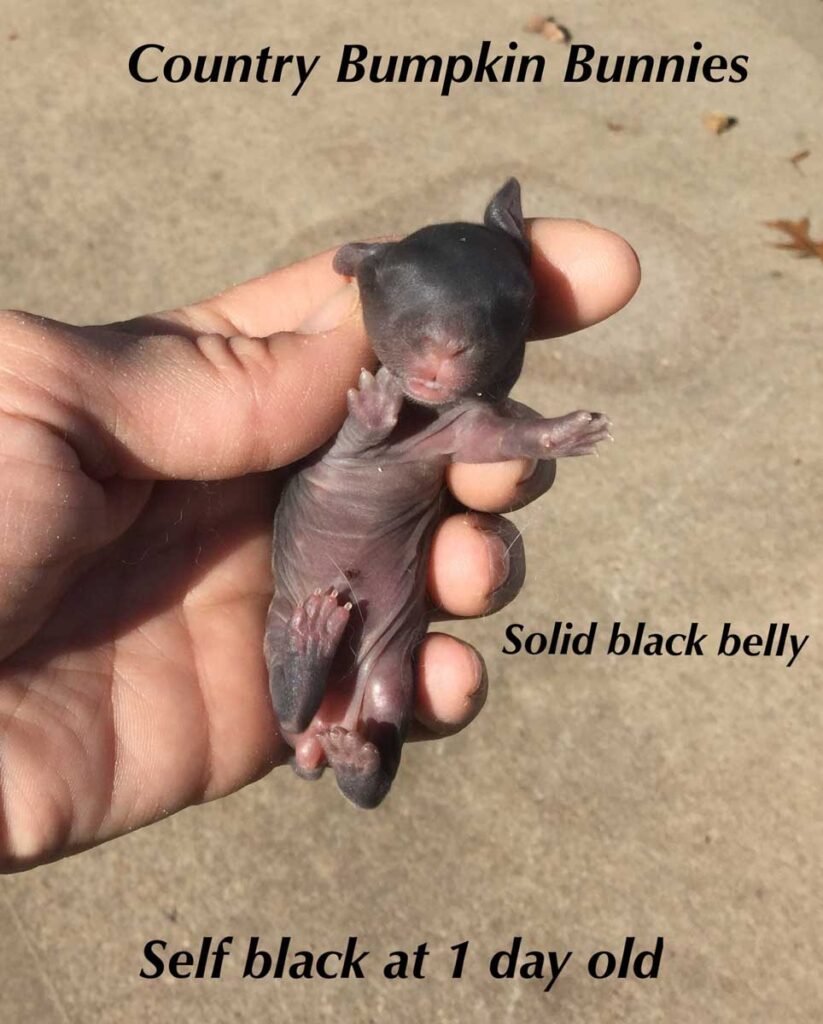
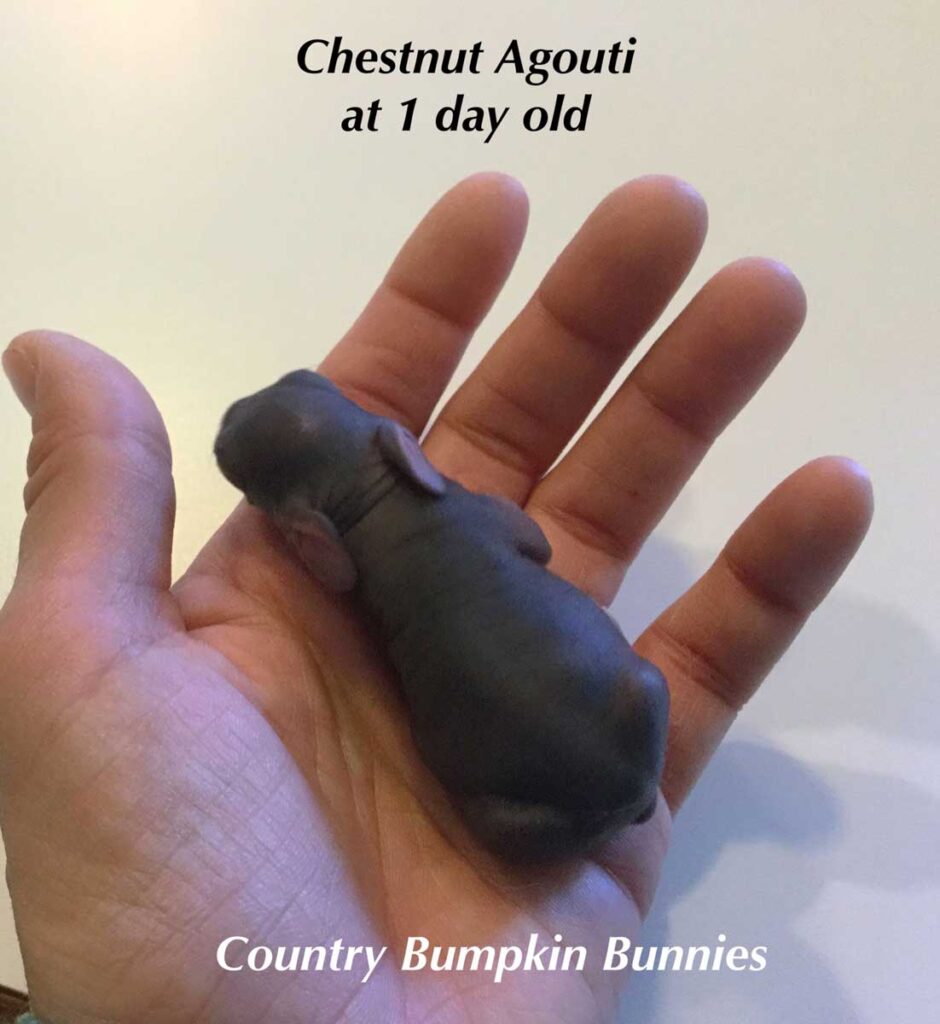
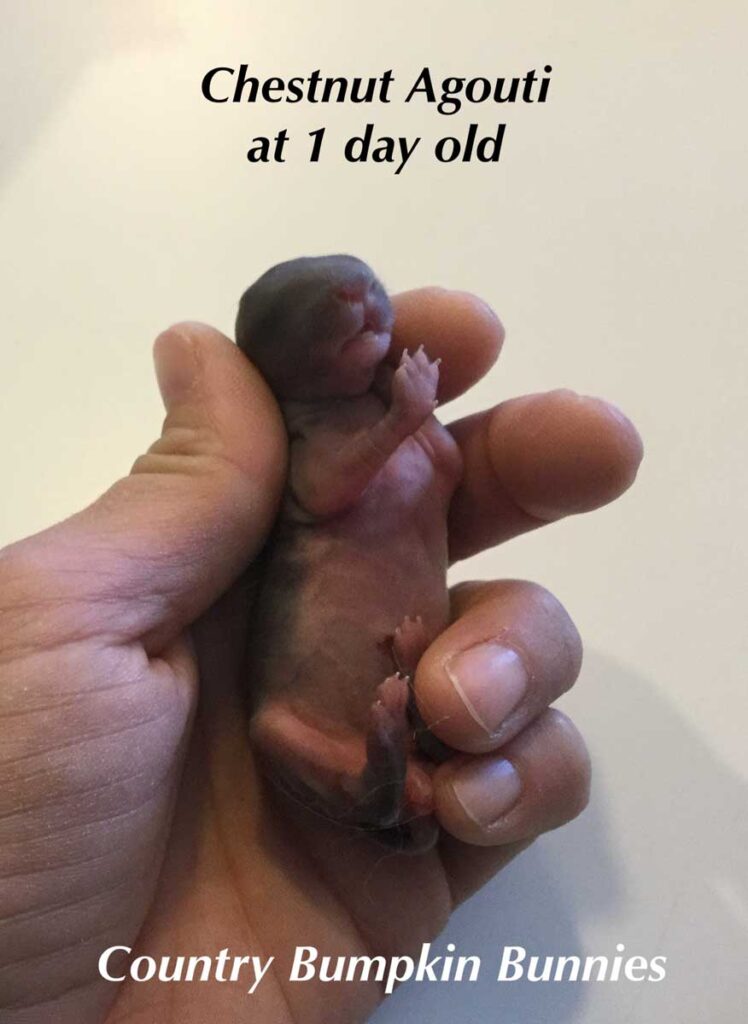
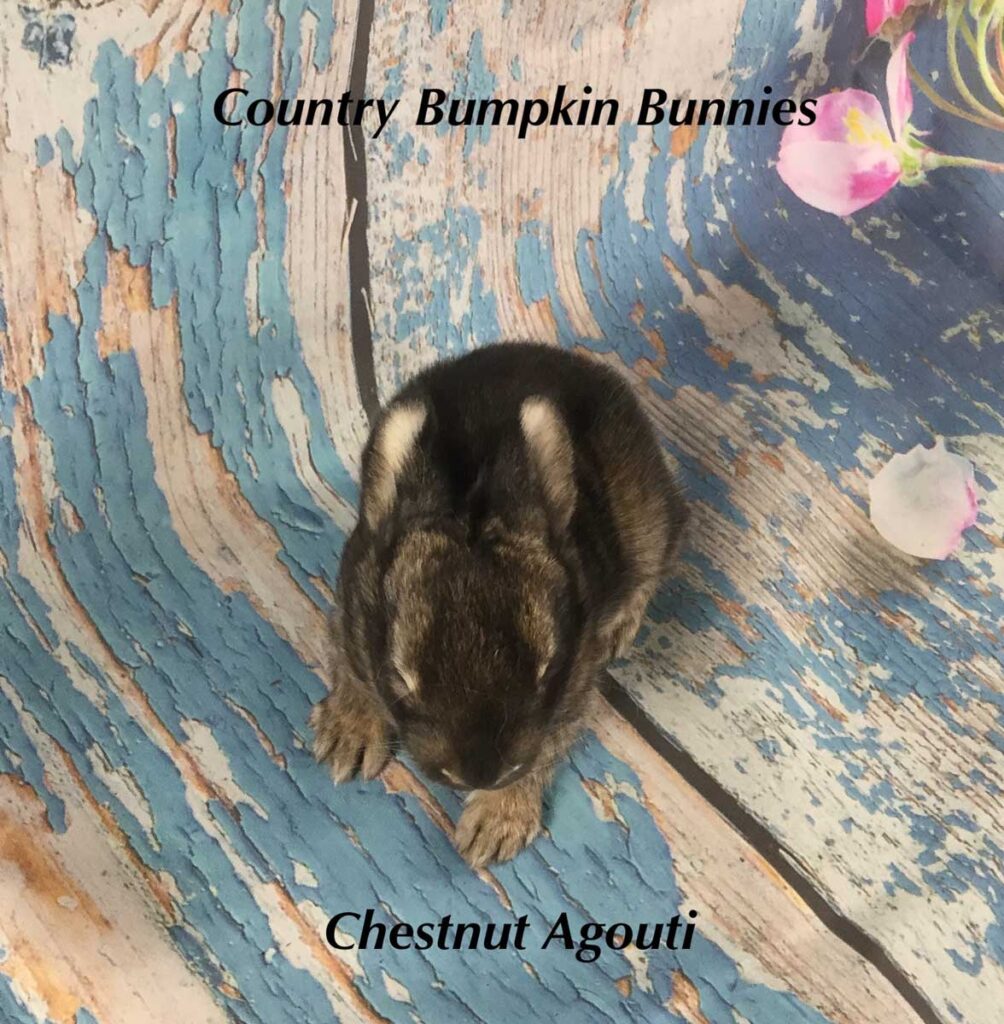
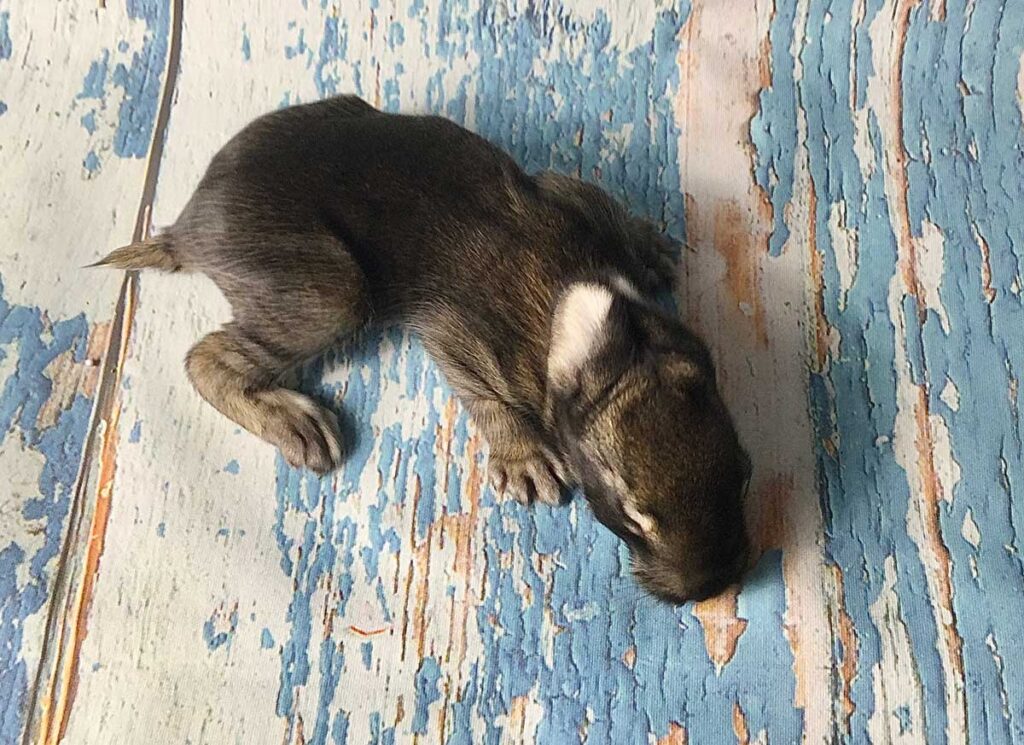
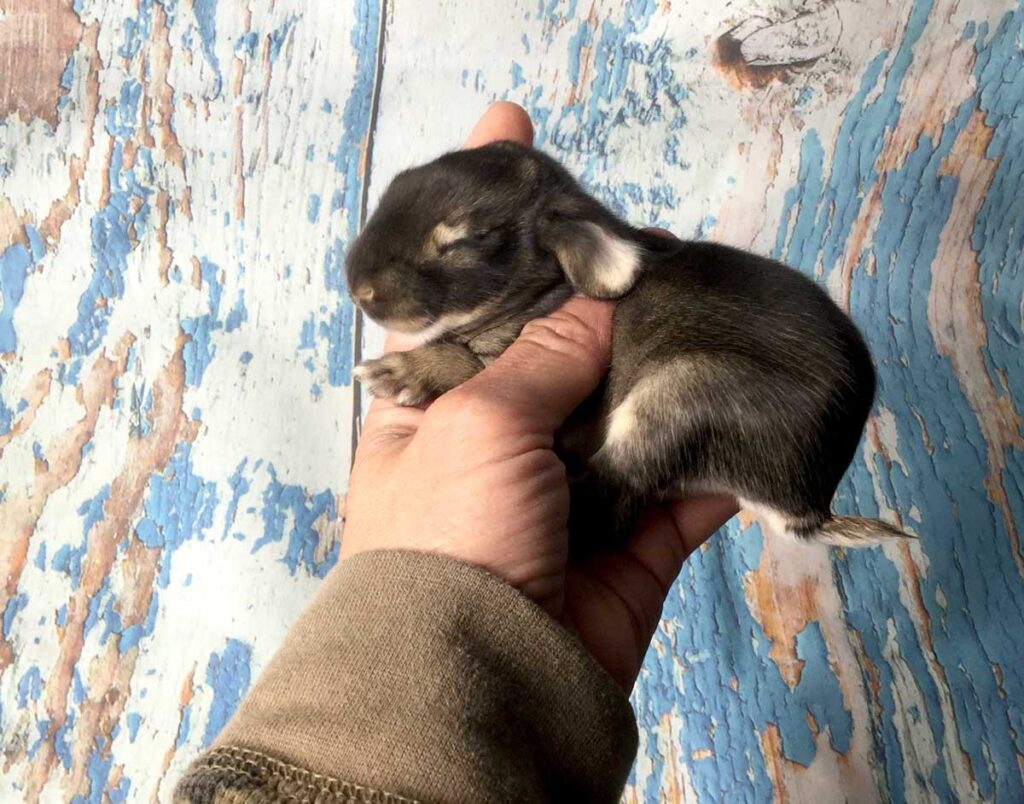
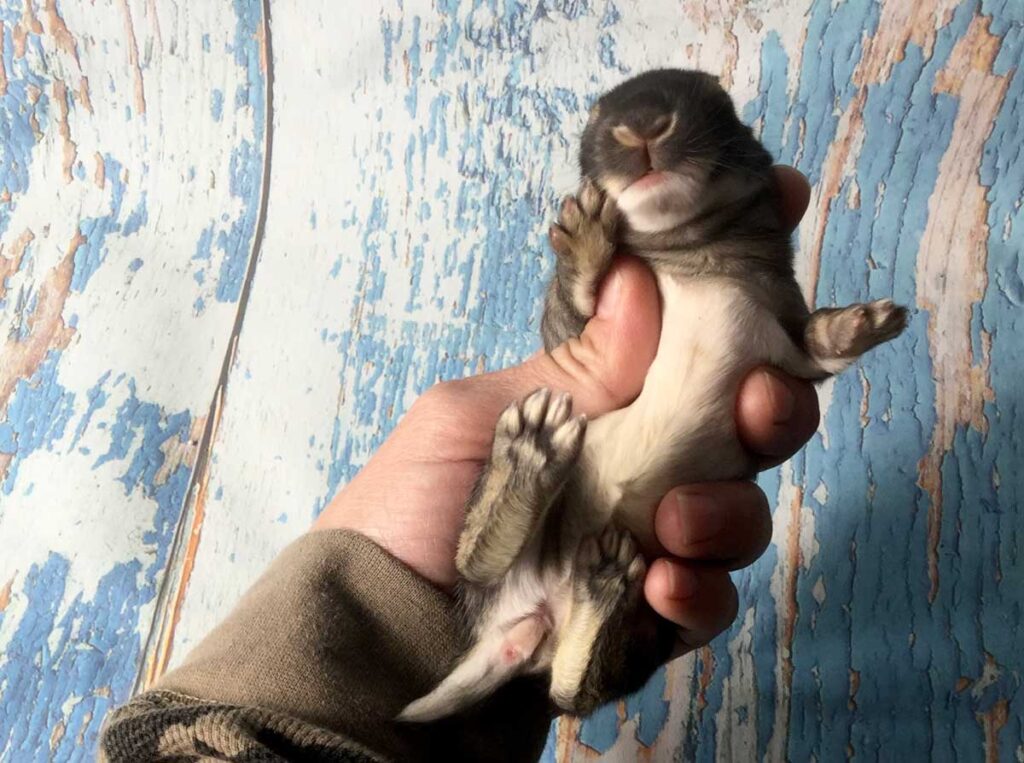
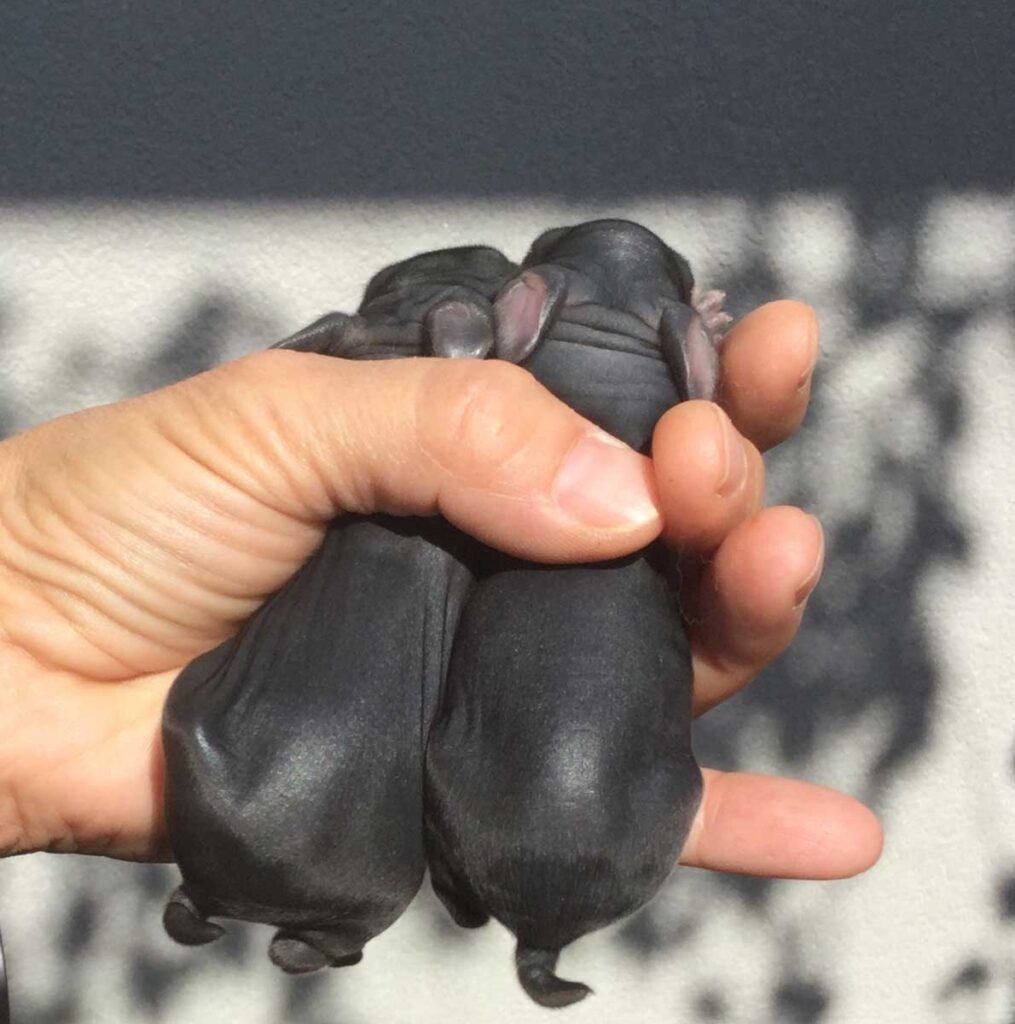
If you take notice of the last photo above, the two newborn bunnies look the same shade. They are both black. But if you look close, you will notice that the newborn bunny on the right has pink on the inner ears and the newborn bunny on the left has solid black ears, including the inner ears. The pink inner ears are a sign that that bunny is a chestnut agouti and the other one is a self black and will not change color like the agouti.
Opal is blue agouti
The dilute of black agouti is blue agouti and this is called Opal. Opal is blue with tan to cream rings that grow in as the coat matures. I love to claim just about every angora color as my “favorite” but there are just too many. However, when we first started breeding, our lines we began with were agouti and we had LOTS of opal bunnies. Opal was my favorite color then, especially when I would blow out bunnies. I still love the gorgeous rings of color an opal angora coat displays. This color is an amazing fiber color for spinning! Opal EA have a dilute gray-blue colored eye.


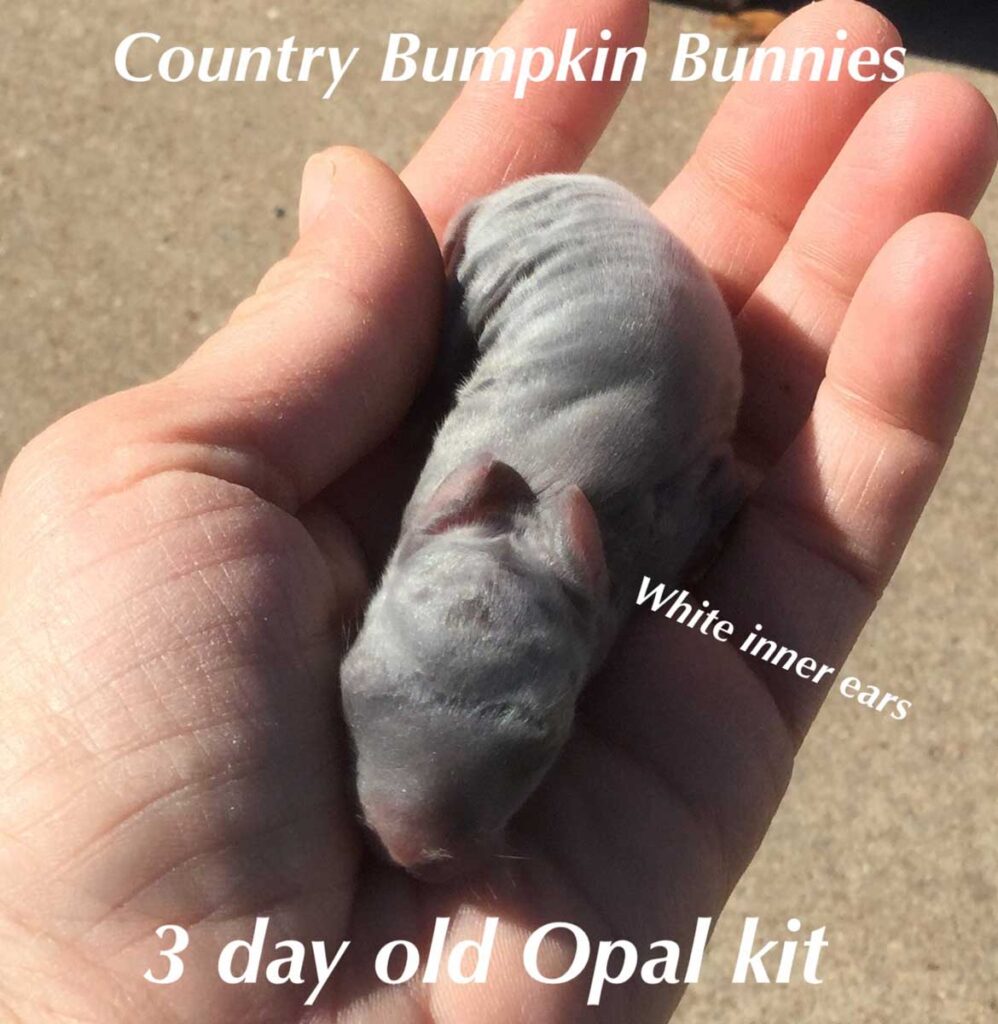
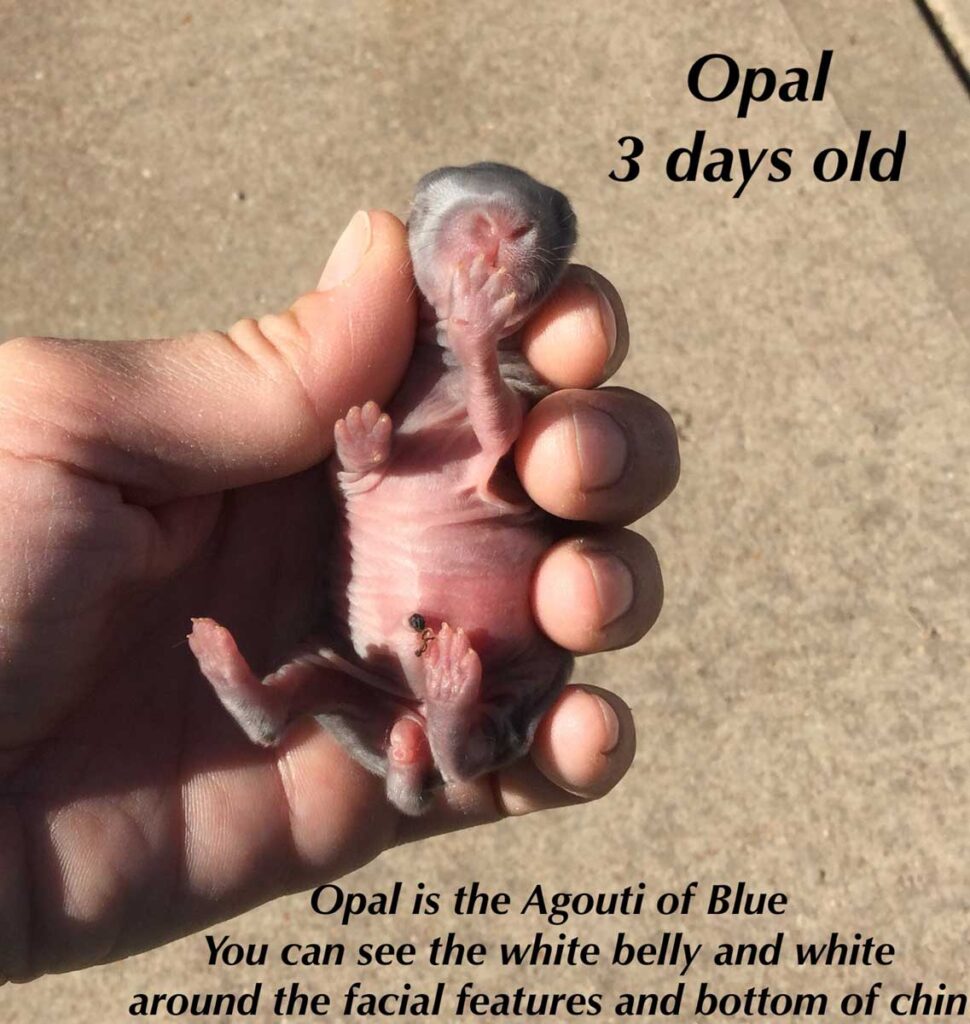
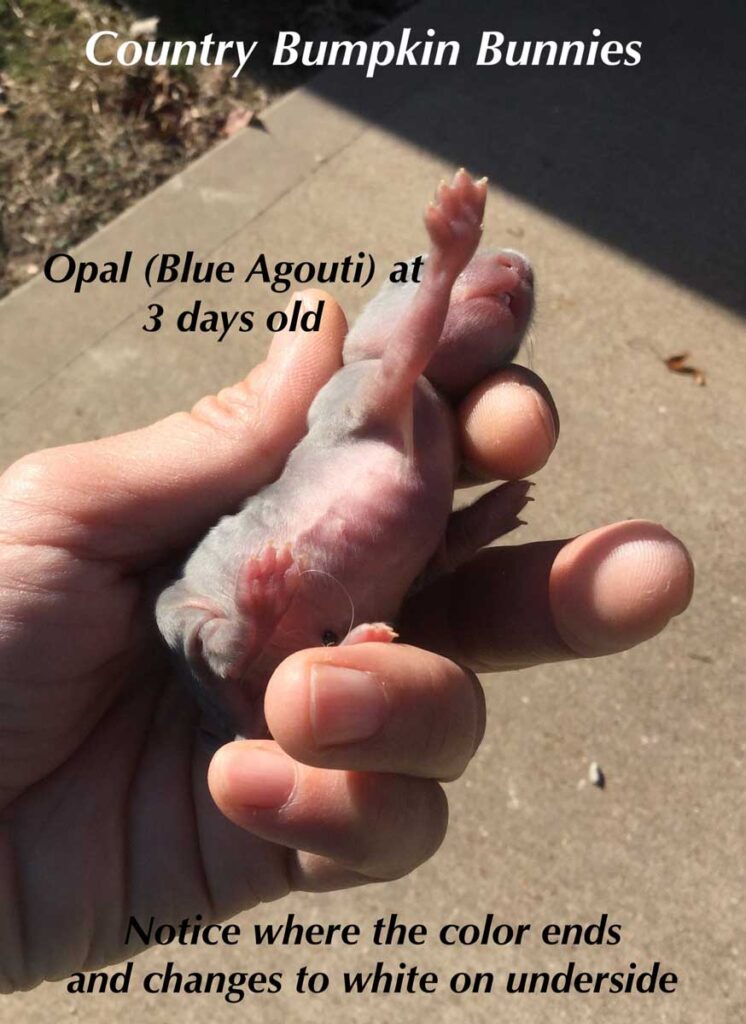



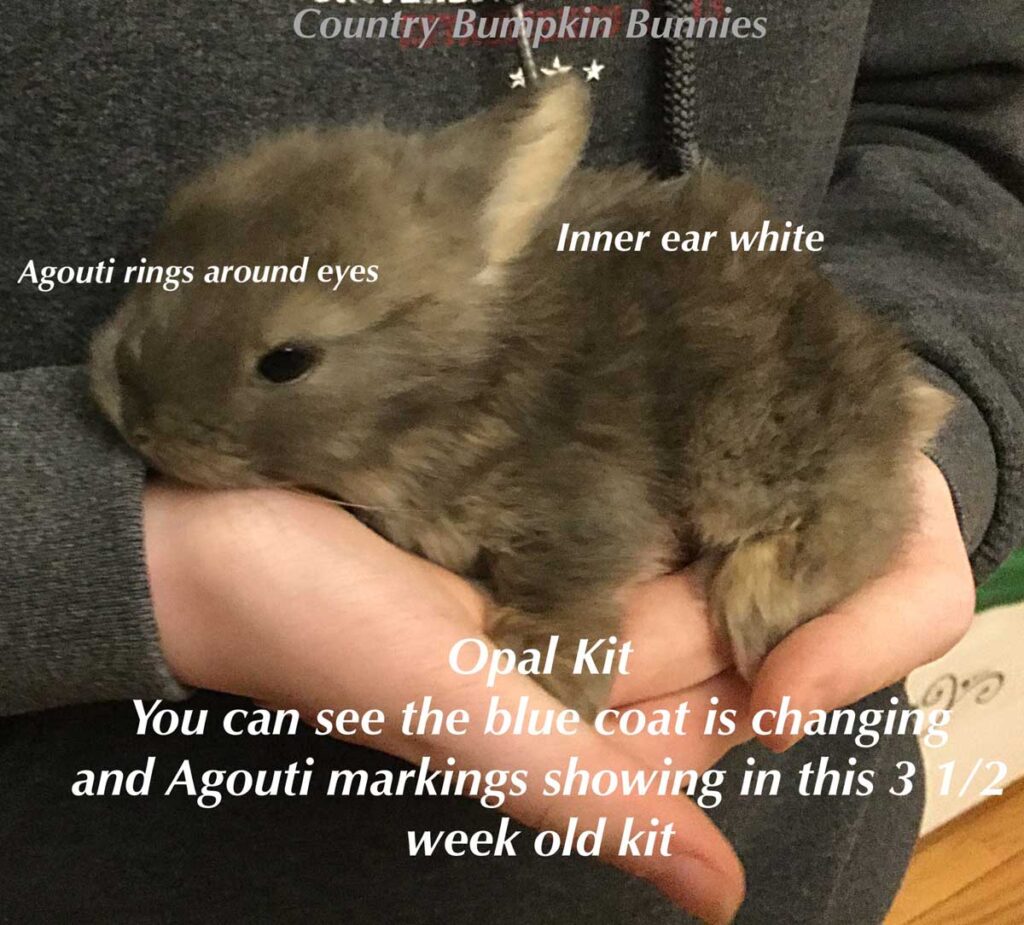


Chocolate Agouti
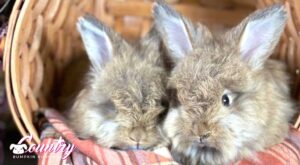
Chocoalte Agouti...
There is no special name for the regular chocolate based agouti color. It is called Chocolate Agouti.
Chocolate Agouti are born dark chocolate with agouti markings. As the agouti color grows in, the coat changes from a rich dark chocolate to a mixture of brown, gray, tan, yellow to cream. The belly, inner ears, under chin to tail on the underside always remain this creamy white. They have brown eyes.
Agouti markings: creamy white undersides and surround facial features

What color is Lynx?
Lynx is a dilute agouti color. It is the agouti for lilac. Here you can view a lilac self compared to a lilac agouti in very young kits. the bunny with the white inner ears and underside is a Lynx. The solid bunny is a self lilac.
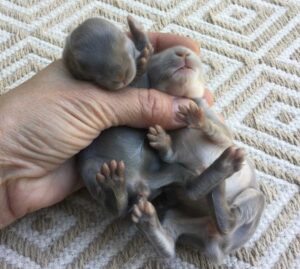
As you can see, the lilac and the lynx are born the same lilac color. As the lynx matures, the color changes dramatically. Below you will see two litter photos of 4 litter mate bunnies. Two are lynx and two are lilac. The other photo is of a lyxn junior EA. You can also see that the lynx has dilute colored eyes. They are more of a blue gray or very diluted grayish brown color.
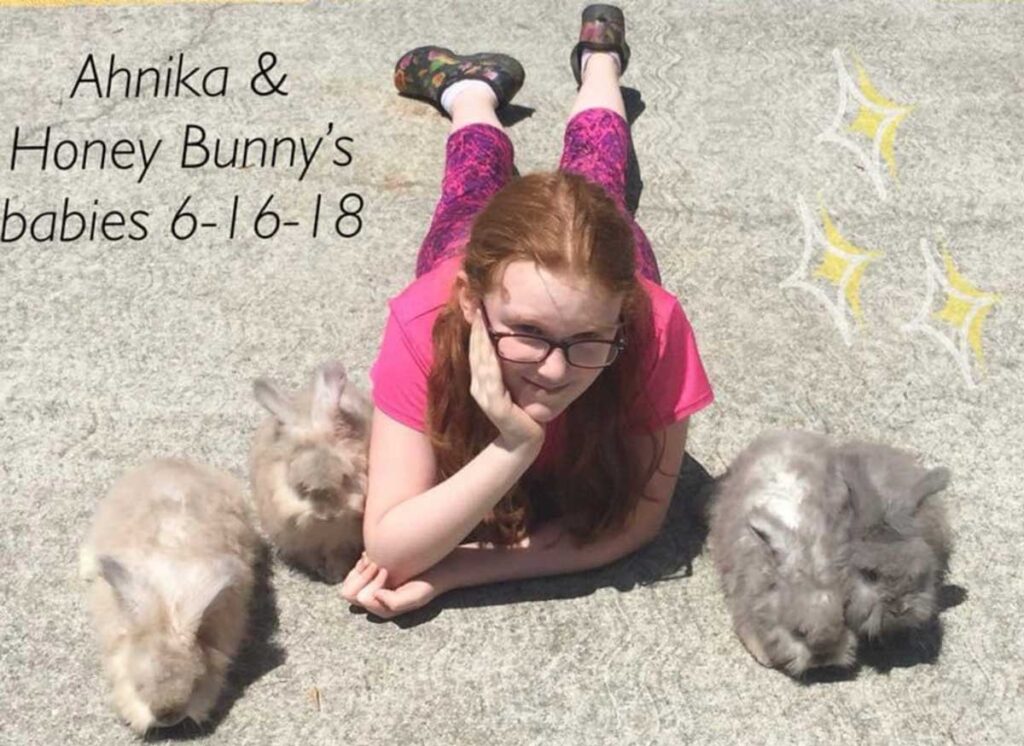
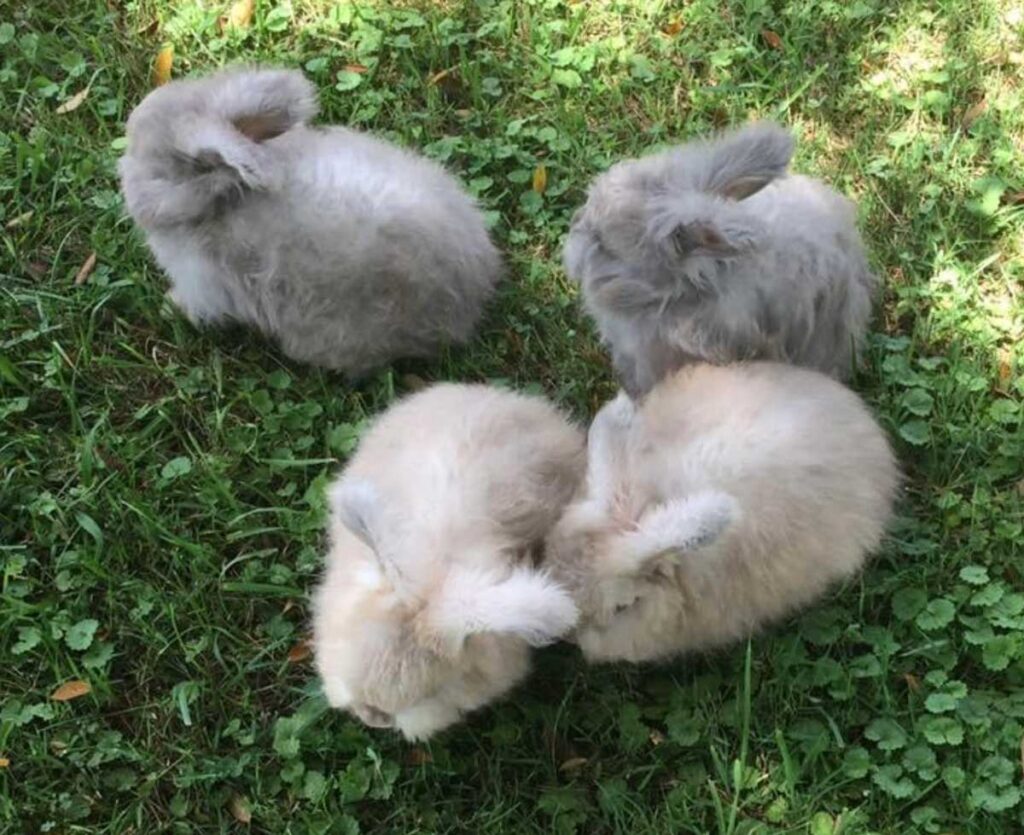
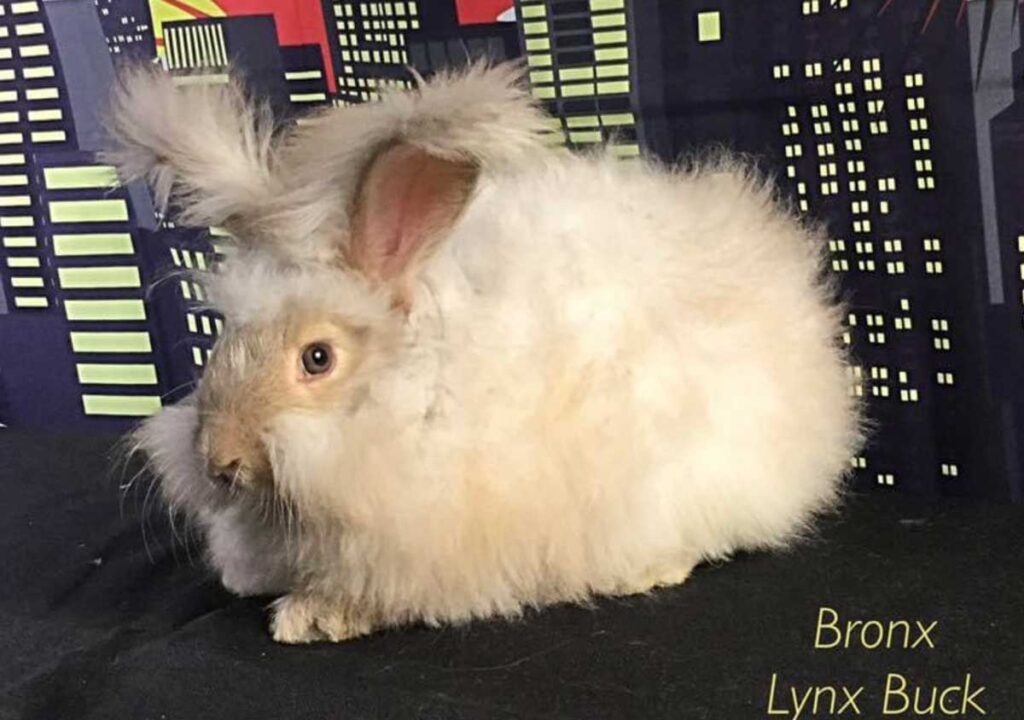

Chinchilla is also an agouti color but it does not have rufus. Rufus is replace with white ticking.
Black Chin is also just called "Chinchilla"
Black chinchilla is sometimes referred to as just “chinchilla”. Most people shorten it and call this color “chin”. There are three other colors of chin. Squirrel is blue chin, then chocolate chin, and lilac chin. Chinchilla is white ticking on the body and has white agouti markings (around facial features, un the underside from chin to tail).

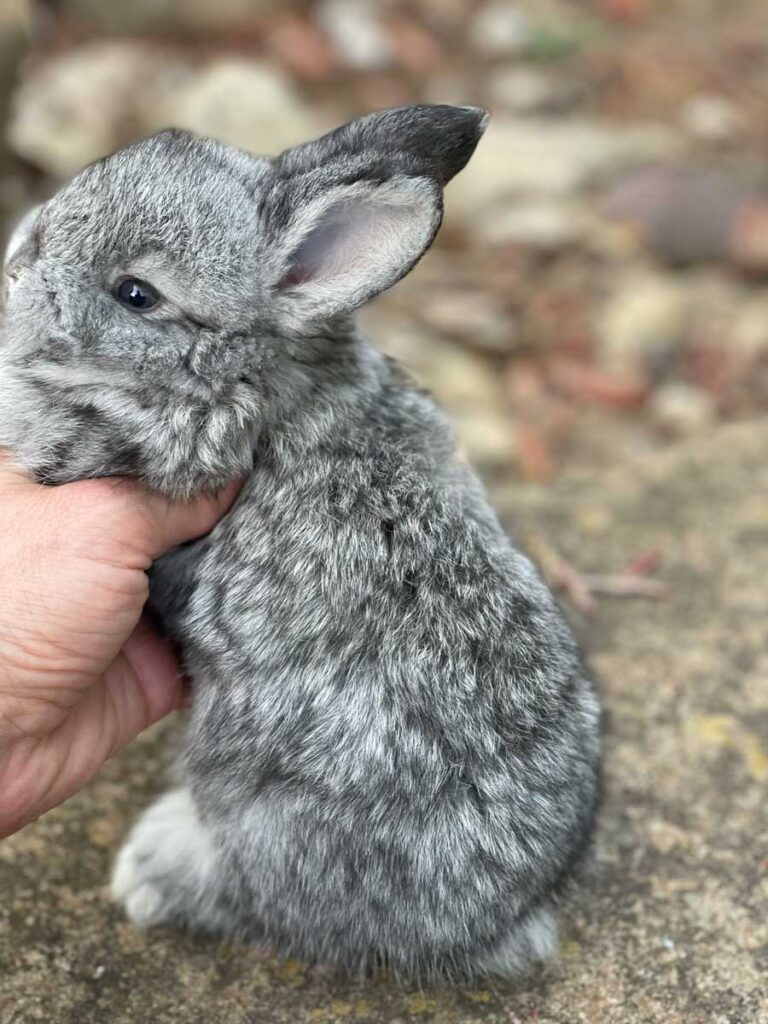
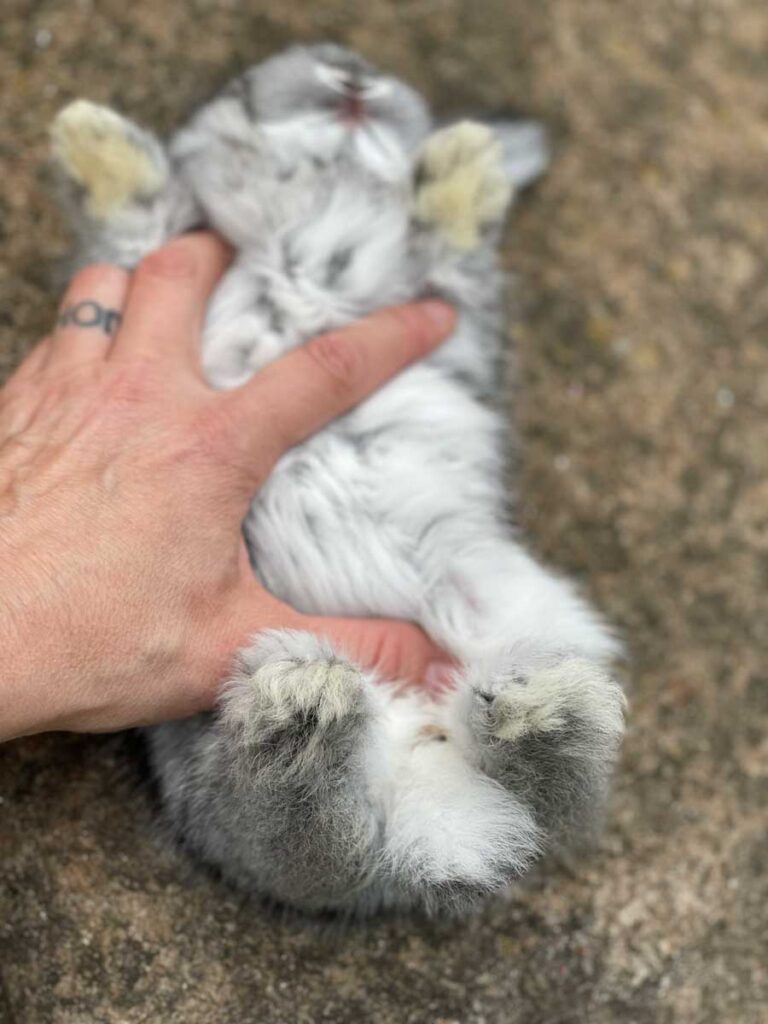
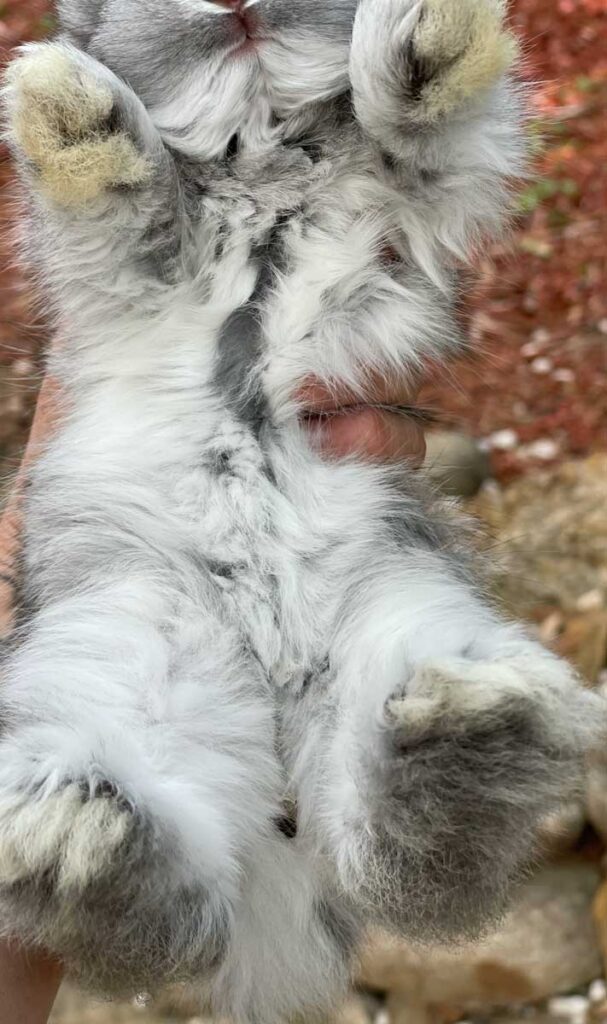
The black chinchilla English Angora bunny above is a young junior. You can see the ticking very well on his body. Two photos show the white underside great. There are white agouti markings around the nose and mouth that continue all the way down the underside to the inner bak legs and bottom of the tail.
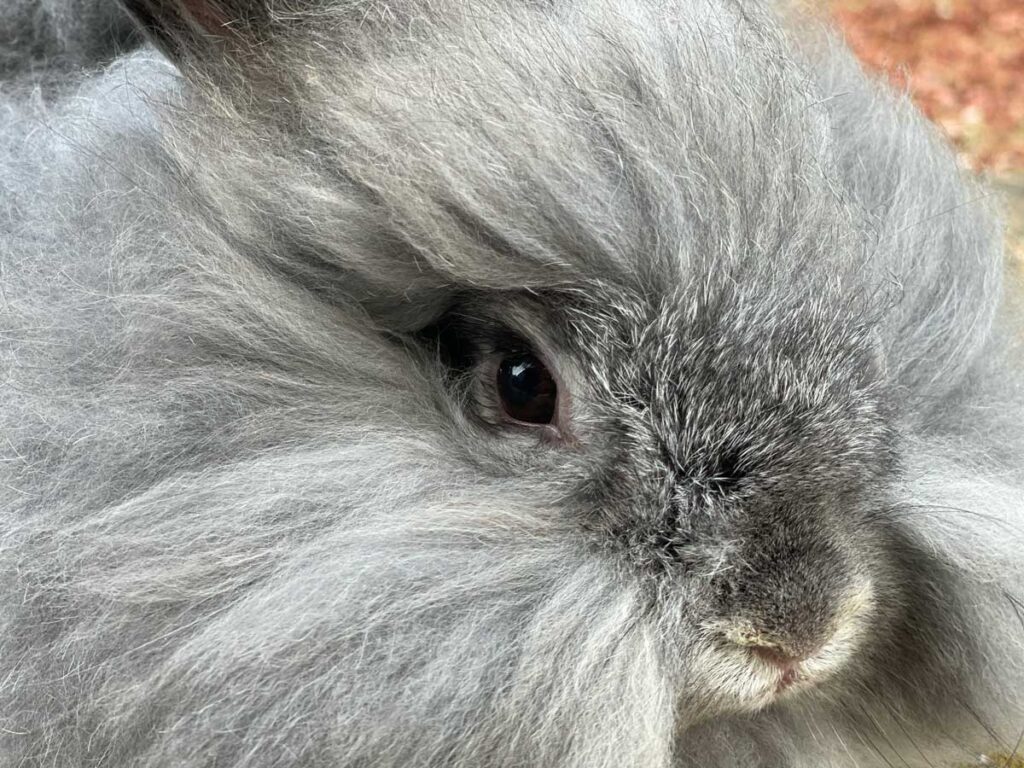
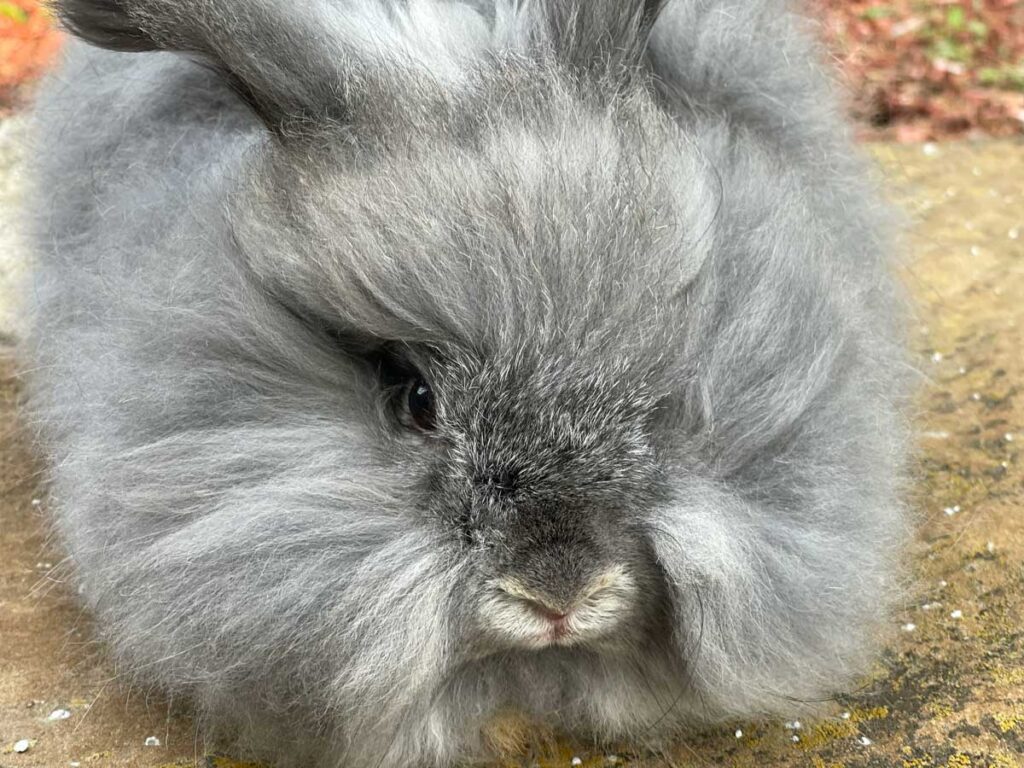
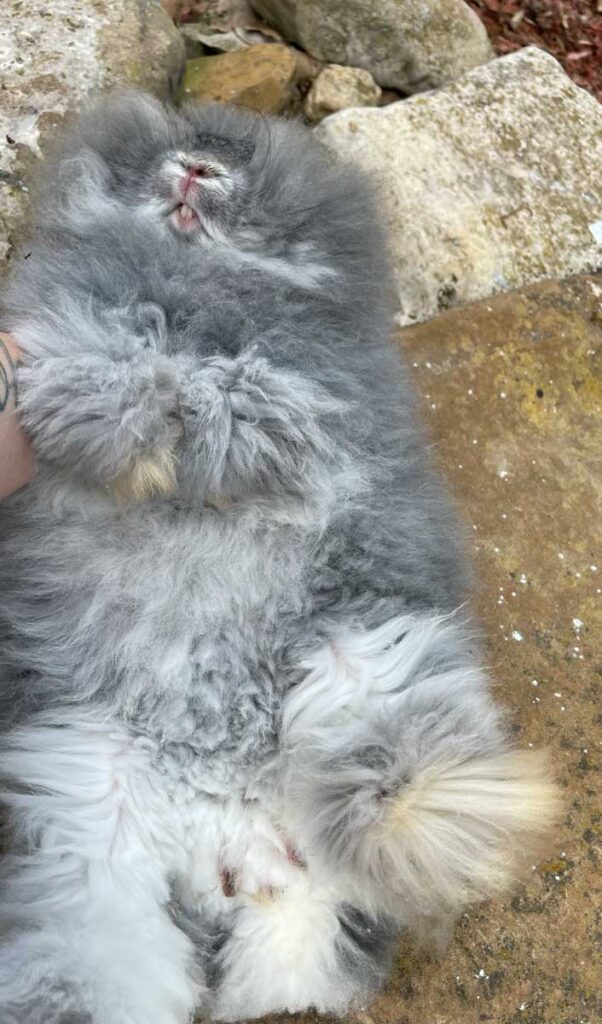
Young senior black chinchilla rabbit above is a great representation of the black chinchilla color and shows the ticking pattern.
Squirrel
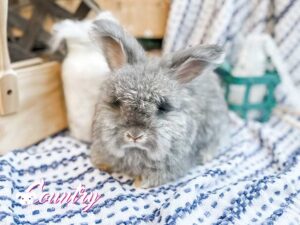
Blue chin is called Squirrel
Blue chin is a very popular color of chinchilla. It is the dilute of black and with that white ticking, it is such a gorgeous pattern! Here you can see a young squirrel EA and a senior squirrel EA with her wool grown out.
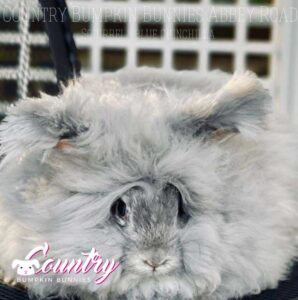

Chocolate Chinchilla English Angoras
Here we are showing you several different ages of chocolate chinchilla English Angoras. One photo below is of a chin litter showing different varieties (including ermine).
Notice the eye color on chinchillas. These are all photos from our rabbitry and we do not have vienna (blue eye gene) in any of our chin lines. Blue eyes are chin blue, not vienna blue. They are marbled sometimes and can be different shades of dilute brown to blue gray.
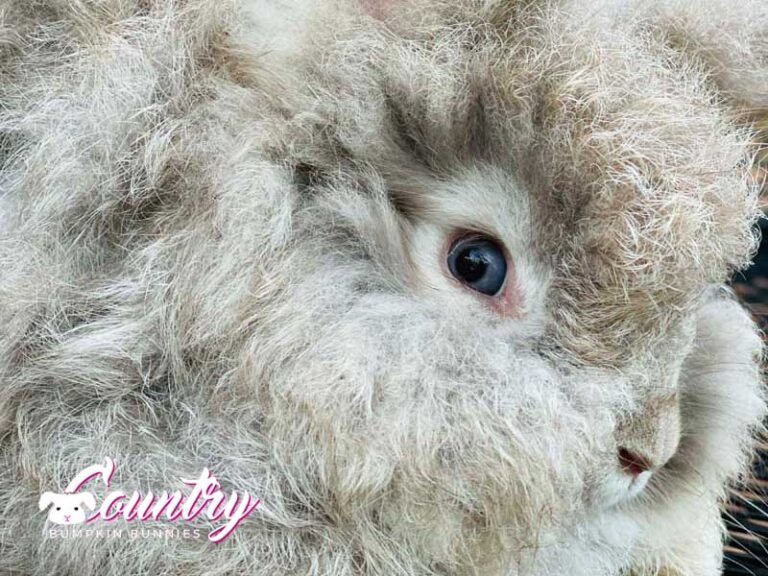
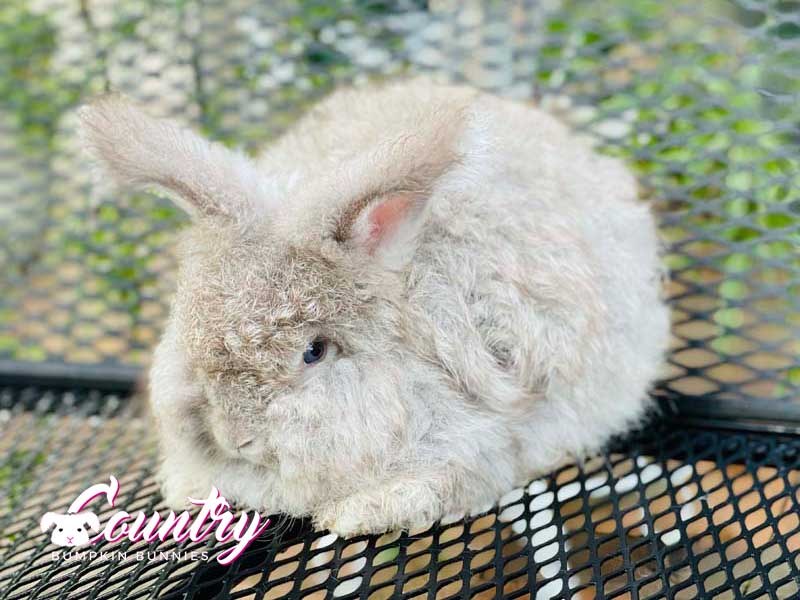
Chocolate based with chinchilla white ticking
Notice how dark a chocolate chinchilla kit is when born and then how light they get as their wool grows out. Color pigment stretches as the wool grows and you see more white which makes them look very light. These are one of the most gorgeous patterns in EA!
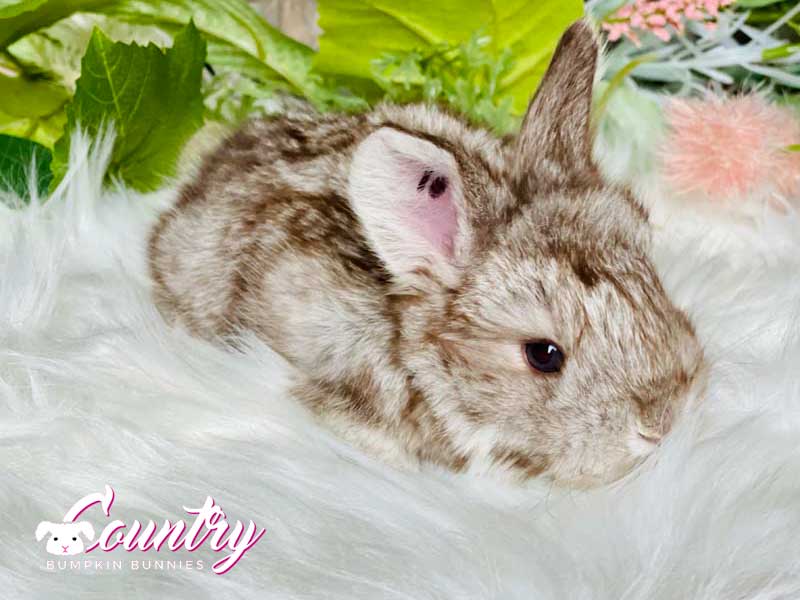
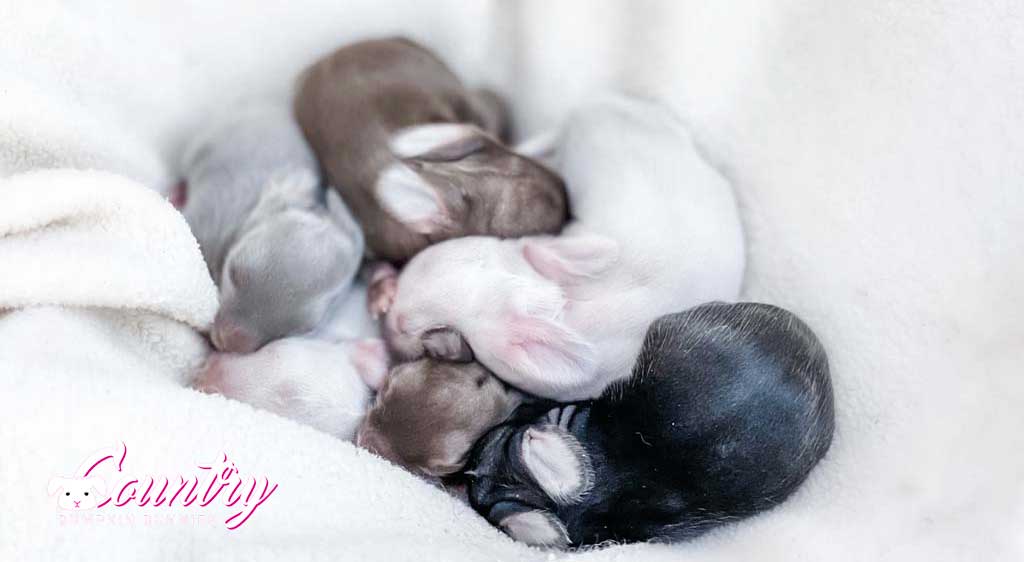

Lilac Chinchilla, lightest of all chin colors and dilute chocolate
So lilac is the dilute of chocolate and it is the lightest shade of the four varieties. This makes the lilac chinchilla the lightest of the group. Once the coat grows out, the pigment stretches and becomes more white with much less lilac pigment.
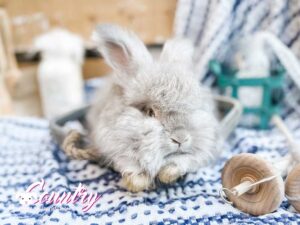
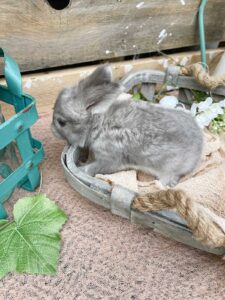
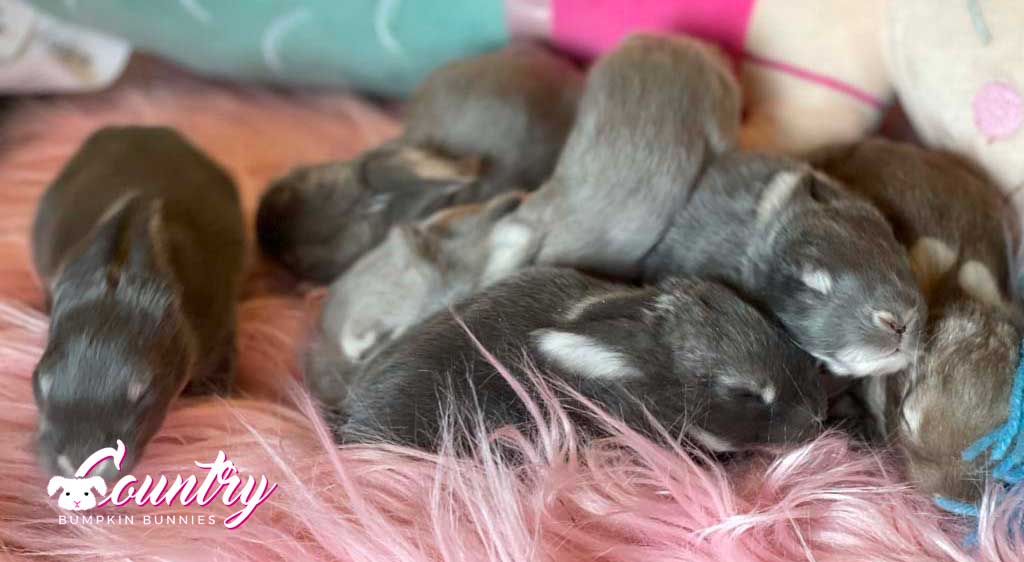
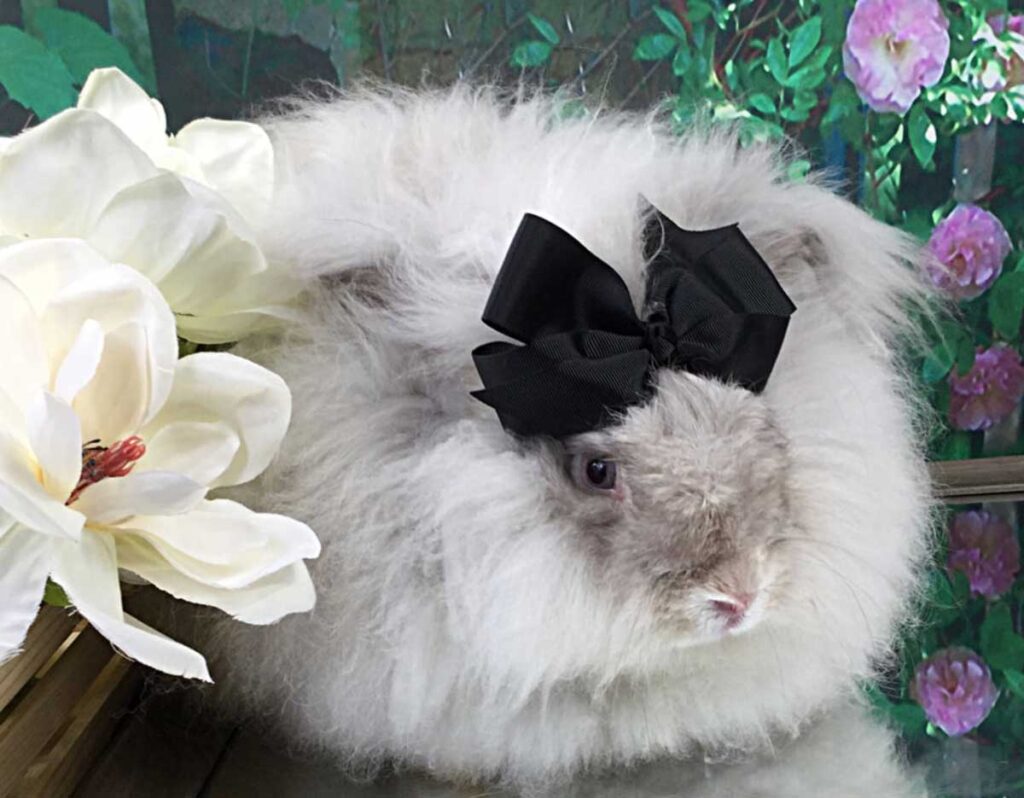
Fawn is agouti and a very common color in EA
Cream

Rufus colors are also agouti regardless of intensity or banding.
There is cream, fawn, and red. They are all the same genetic make up but the rufus will determine what we call it. Rufus is a modifier or it is also called rufus factoring. It is written about by using the plus sign “+” to show how much intensity. Not many people use this symbol but rather just say “high rufus” or “low rufus”. Some pedigree programs will even allow you to mark pedigrees as HR for high rufus. Obviously hand written pedigrees can state anything.
Not many people pay a lot of attention to the wideband gene. This changes the appearance of the color drastically. We will discuss the Wideband gene in more depth soon. However, I just want to mention that it can cause an agouti to have more rufus color and two bunnies that are born the same color can look like two different colors when mature just because of the Wideband gene.
Red
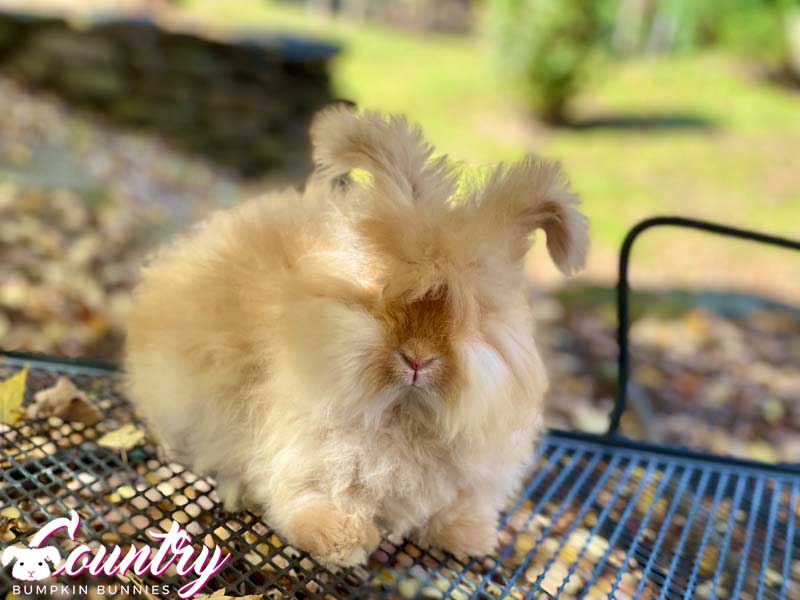
Here is a collection of several rufus EA shades: cream, fawn, high rufus fawn, and red
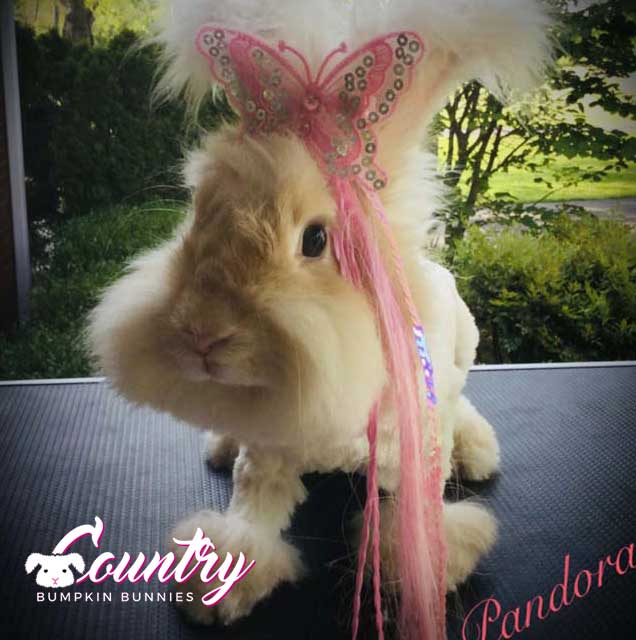
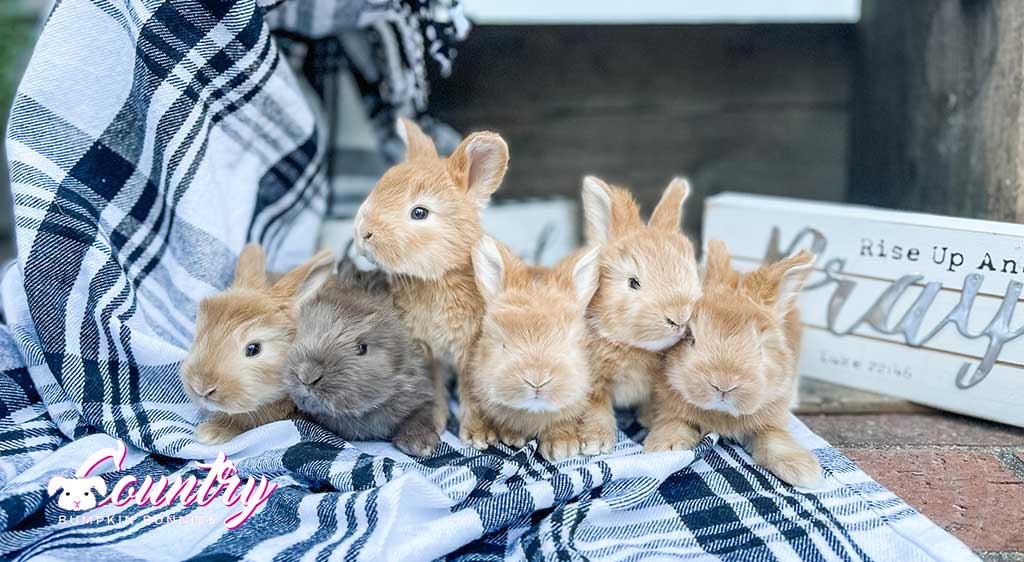
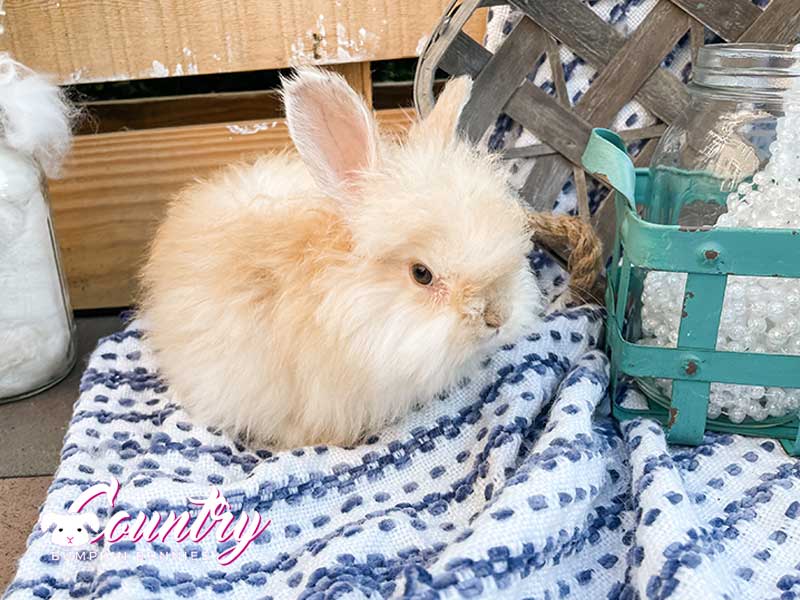
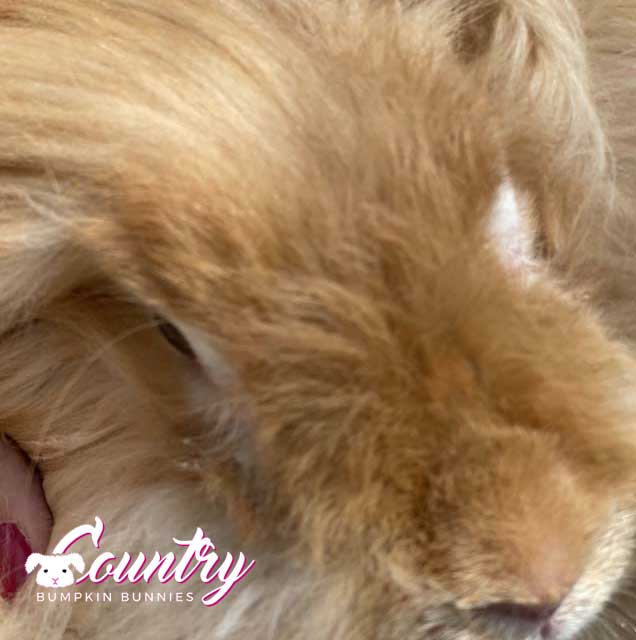
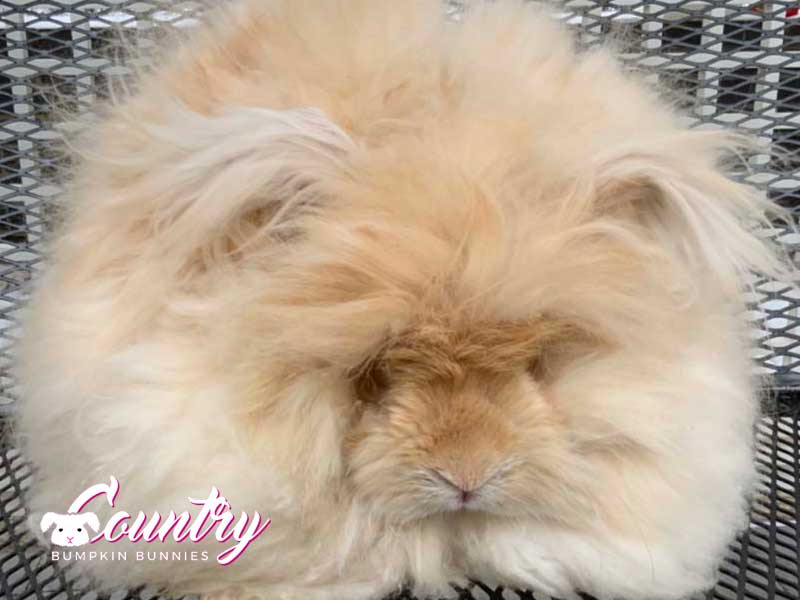
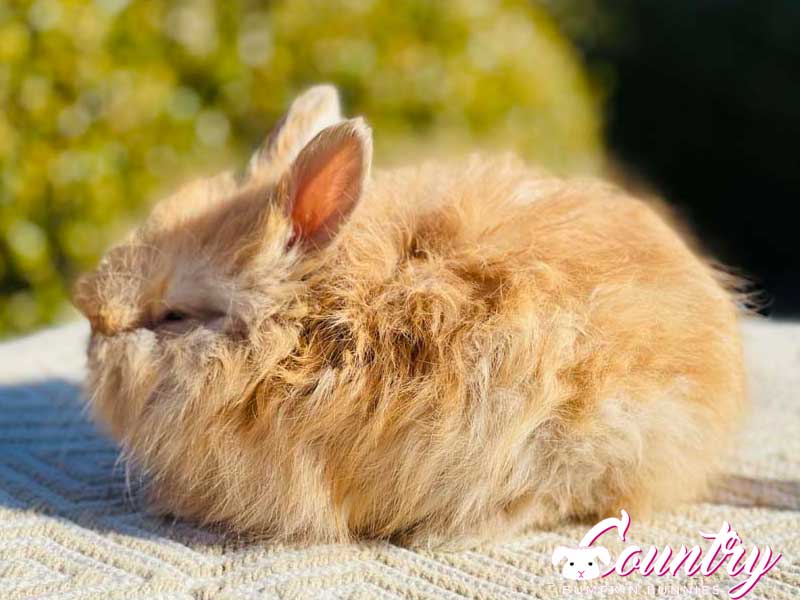
Comparing rufus intensity!
The comparison photo speaks volumes don’t you think? the bunny on the left is a red english angora. The bunny to its right is a fawn.
Genetically these two bunnies will have the same genotype to make them both agouti “A_” and on the extension allele, they are both “ee”. The color intensity is based on whatever this fawn color is covering up.
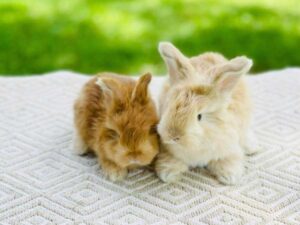
Fawn is an agouti but it is also a cover up color. There is always a base color to every rabbit. Remember our four base colors?
Black, Blue, Chocolate, and Lilac
You must look at the parents colors to figure out what your fawn bunny’s base color is. Certain colors can cause smut on fawns and reds. Smut is a dirty, sooty cast to the ears and nose. It appears a gray color on nose and lining of the ears. The fawn in this photo has a tiny bit of smut but there are some smutty fawns that look like a fox color (torted otter) or even a tort because it is so prevalent. We discuss smutty fawn later in our genetic/color blog topics.
Above are lots of photos of cream, fawn, and red. A tip if you are trying to breed to heighten the rufus, add chocolate to the mix and it will intensify your rufus. We never breed red to red. That does not improve color in our opinion. We keep at least two bucks and two does (if not more) in our red breeding program. We always breed chocolate agouti to red in order to get deeper shades of red. Even our chocolate agouti colors become stunning high rufus shades.
- Check out our Basic Genetics page on English Angora rabbit coat colors.
- View our EA Rabbit Colors page to see all of the different colors.

